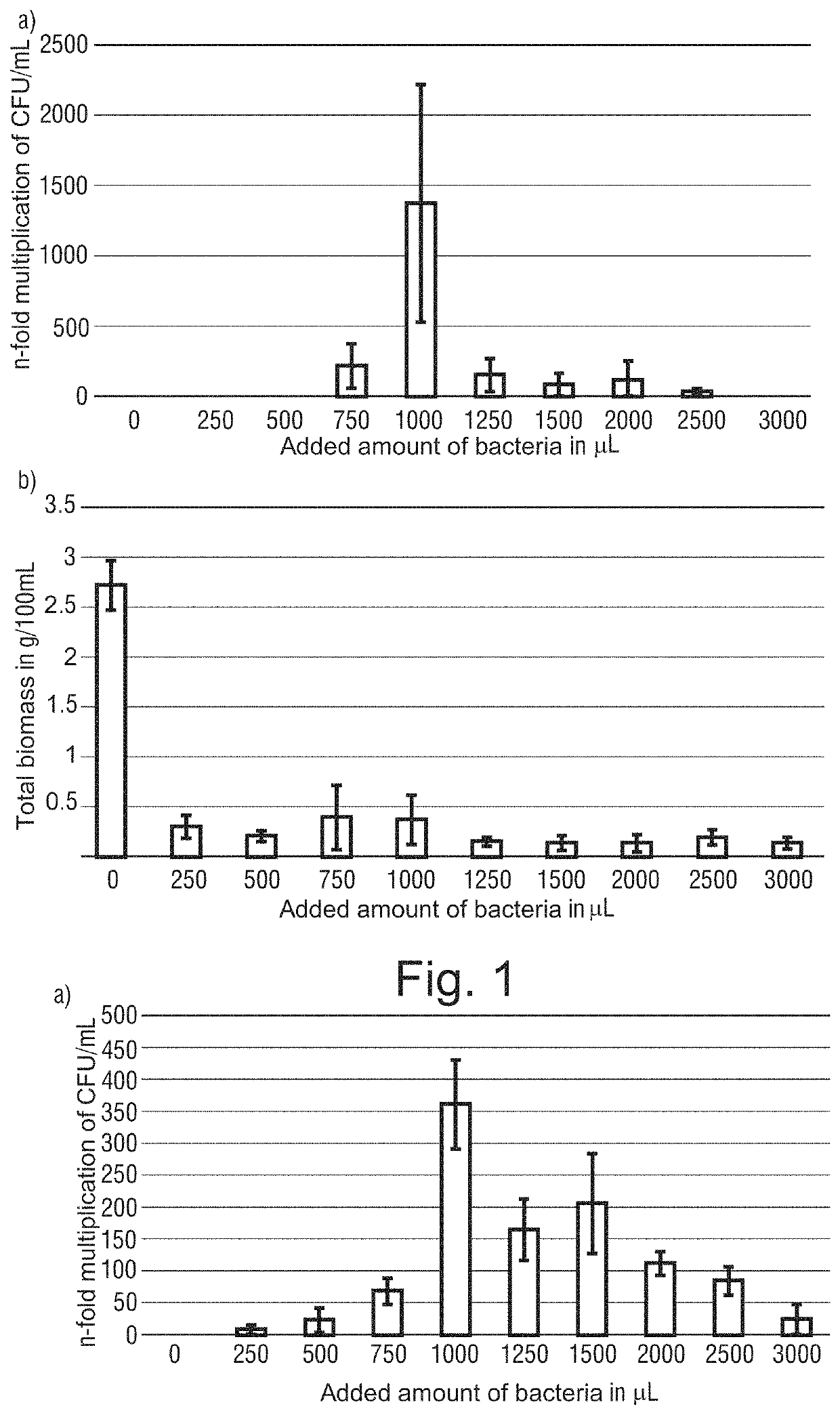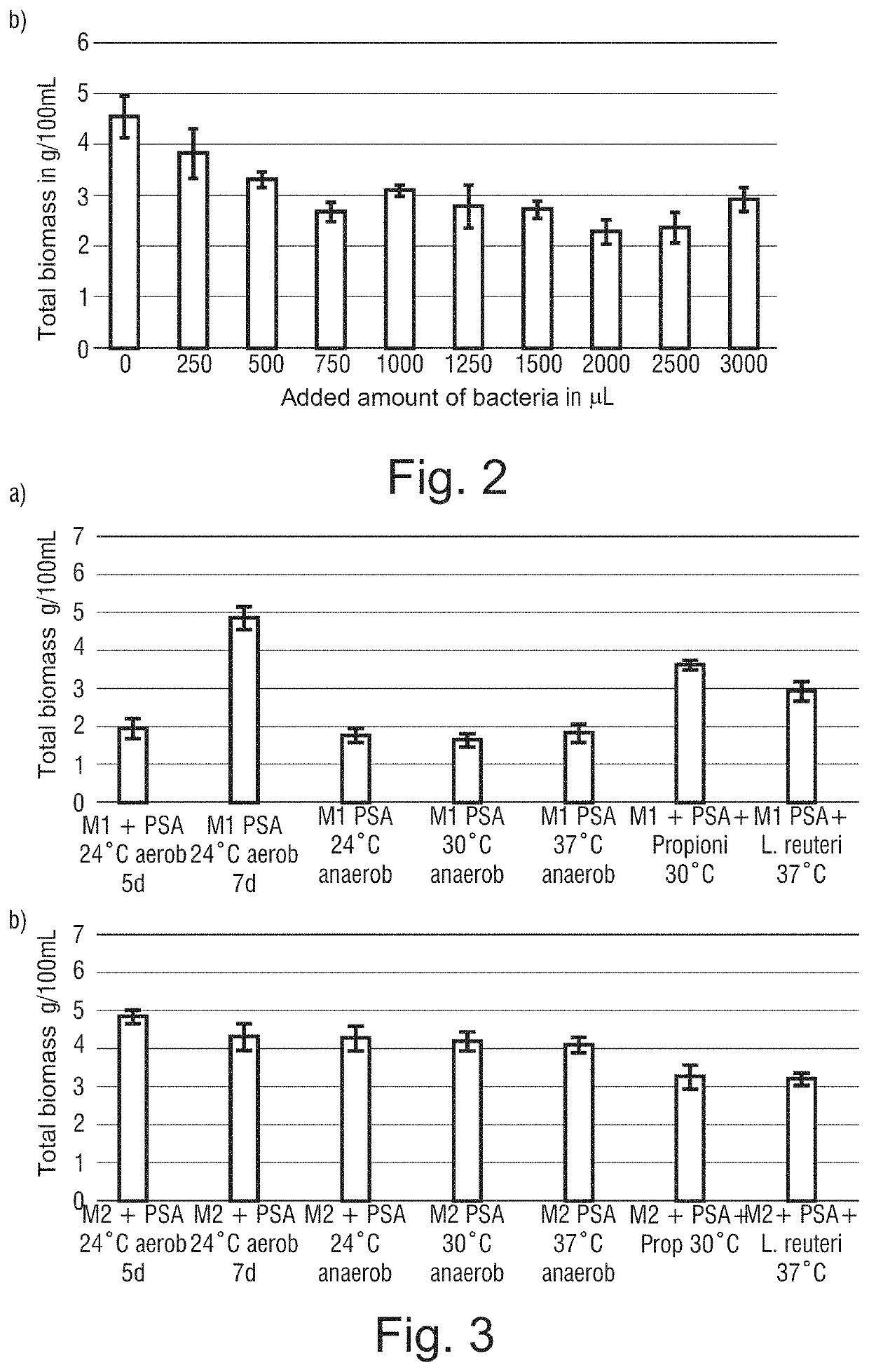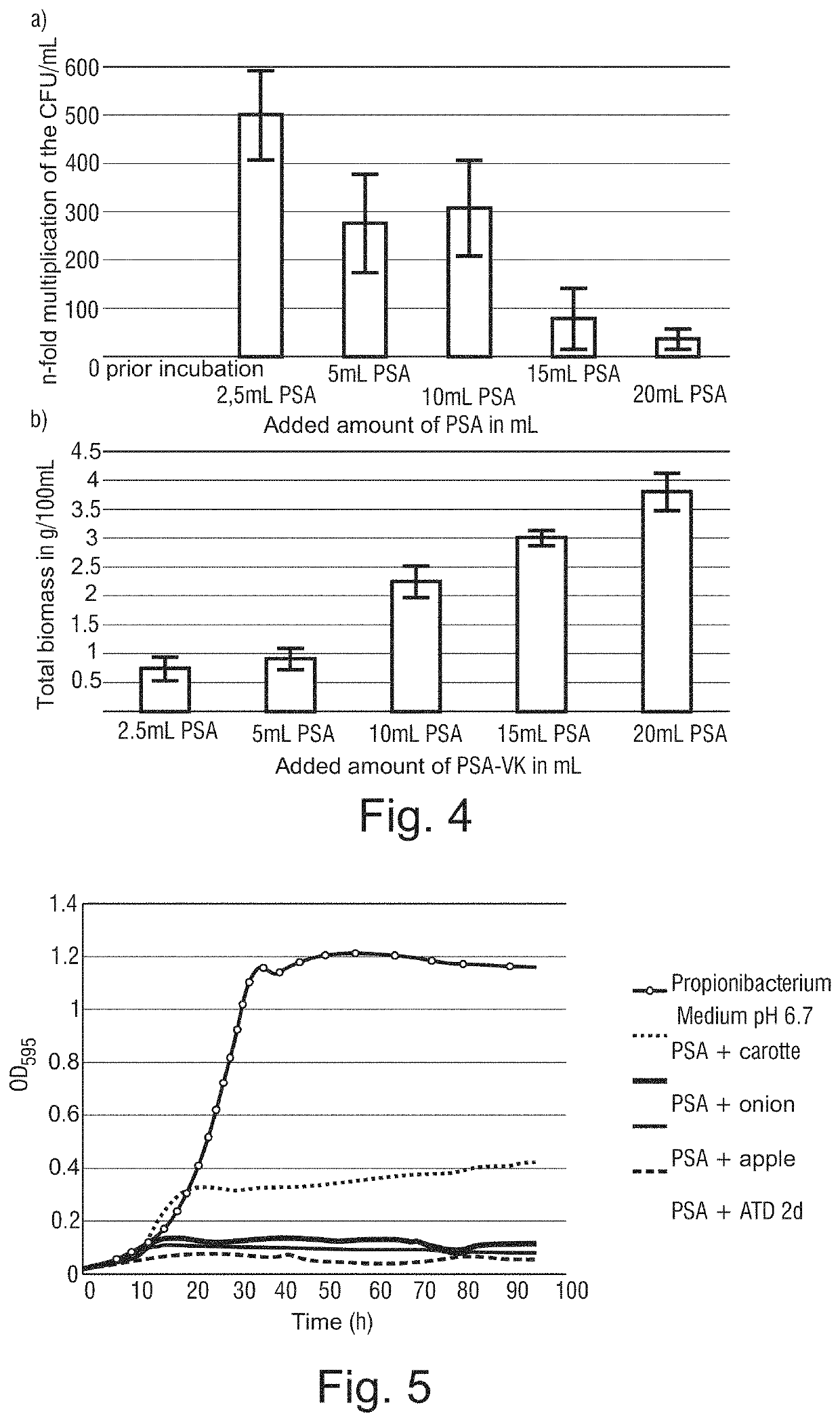Sequential co-culturing method for producing a vitamin- and protein-rich food product
- Summary
- Abstract
- Description
- Claims
- Application Information
AI Technical Summary
Benefits of technology
Problems solved by technology
Method used
Image
Examples
worked examples
[0232]The present invention is illustrated below by means of different exemplary processes and product examples which, however, are not to be regarded as limiting.
example 1
Screening of Different Fungus-Substrate Combinations
[0233]As selection criterion the growth [g DM L−1], the cultivation duration and the protein yield [g L−1], measured according to the method for determining the crude protein content according to Kjeldahl (cf. under 10. “Determination of the total nitrogen content according to Kjeldahl (crude protein)”) were used.
[0234]Inter alia fresh apple pomace (Fischer) and apple pomace (Döhler) turned out to be highly suitable substrates for the production of Basidiomycota biomass in combination with Pleurotus sapidus (PSA) (culture period: 4 days, approx. 14 g DM L−1, approx. 3 g L−1 protein). Furthermore, also the isomaltulose molasses in combination with PSA (culture period: 4 days, approx. 11 g DM L−1, approx. 2.8 g L−1 protein), onion pomace in combination with PSA (culture period: 13 days, approx. 34.5 g DM L−1, approx. 3 g L−1 protein), and carotte pomace in combination with Lentinula edodes (LED) (culture period: 6 days, approx. 9 g D...
example 2
Co-Cultivation of Pleurotus Sapidus and Propionibacterium Freudenreichii
[0235]First, it was tested, which temperature ranges are tolerated by the used organisms. Thereby, it was found out that Basidiomycota show sufficient growth only until 27° C. and do hardly form any biomass after this raise in temperature even at optimum temperature. The used bacteria require higher temperatures for sufficient growth, preferably the optimum temperature for propioni bacteria is at 30° C.
[0236]First, Pleurotus sapidus (PSA) in minimal medium M1, with 10% (v / v) isomaltulose molasses added, was cultivated for 24 h aerobically (10 ml PSA pre-culture and 90 ml M1 / isomaltulose mixture) and, subsequently, different amounts of a bacteria pre-culture having about 6*109 CFU / ml (P. freudenreichii subs. freudenreichii and subs. shermanii) were added. An incubation for 7 days under switching to anaerobe conditions was carried out at 30° C. Bacteria growth was observed at the end of the incubation period, spe...
PUM
| Property | Measurement | Unit |
|---|---|---|
| Density | aaaaa | aaaaa |
| Density | aaaaa | aaaaa |
| Density | aaaaa | aaaaa |
Abstract
Description
Claims
Application Information
 Login to view more
Login to view more - R&D Engineer
- R&D Manager
- IP Professional
- Industry Leading Data Capabilities
- Powerful AI technology
- Patent DNA Extraction
Browse by: Latest US Patents, China's latest patents, Technical Efficacy Thesaurus, Application Domain, Technology Topic.
© 2024 PatSnap. All rights reserved.Legal|Privacy policy|Modern Slavery Act Transparency Statement|Sitemap



